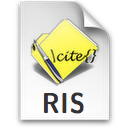

| ORIGINAL ARTICLE |
 |
 |
Urban air pollution has significant impacts on plant life, affecting their growth, development, and overall health. Understanding plant responses to pollution is crucial for environmental monitoring and mitigation efforts. In this study, plants were collected from both polluted and non-polluted areas using the Quadrant method. Four plant species—Alternanthera sessilis, Mimosa pudica, Boerhaavia diffusa, and Sida acuta—were selected to assess their pollution tolerance. Key parameters such as ascorbic acid content, relative water content, leaf extract pH, and total chlorophyll content were analyzed separately for each plant. Ascorbic acid content was determined by the Colorimetric method, total chlorophyll content was measured using Spectrophotometry, leaf extract pH was calculated with a pH meter, and relative water content was assessed using initial, turgid, and dry weights. These parameters were used to calculate the Air Pollution Tolerance Index (APTI) value.
The results revealed that the dominance pattern of plants along NH 47 was consistent with APTI value determinations. Alternanthera sessilis and Boerhaavia diffusa exhibited higher APTI values and were the most dominant species in the polluted areas, whereas Mimosa pudica and Sida acuta showed lower APTI values and were less dominant. The study demonstrated that ascorbic acid content, leaf extract pH, total chlorophyll content, and relative water content are crucial parameters for determining plant tolerance to air pollution. Furthermore, it suggested that plants in polluted areas adapt to environmental changes by altering their physical and biochemical characteristics. Future molecular and gene expression studies could provide deeper insights into these adaptive mechanisms. Identifying tolerant plant species through APTI values is significant for employing these species in air pollution control and mitigation efforts.
Key words: APTI value, Tolerance, Vehicular emission

